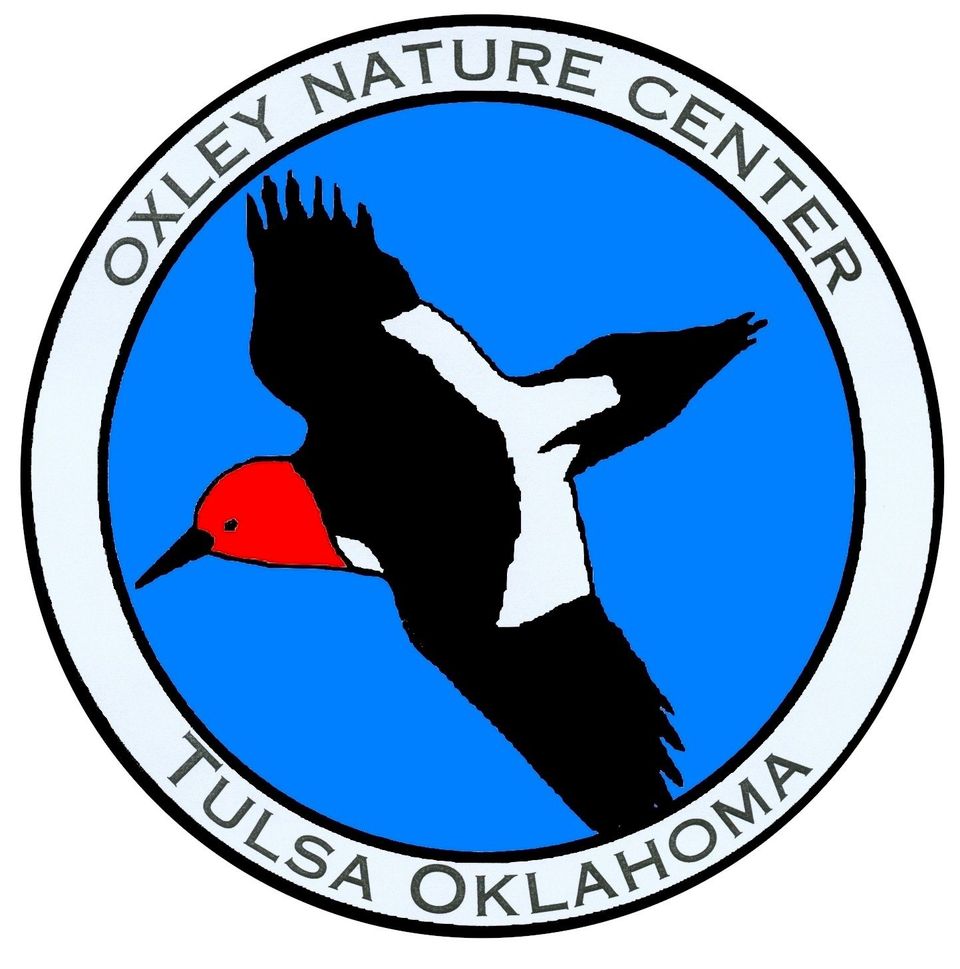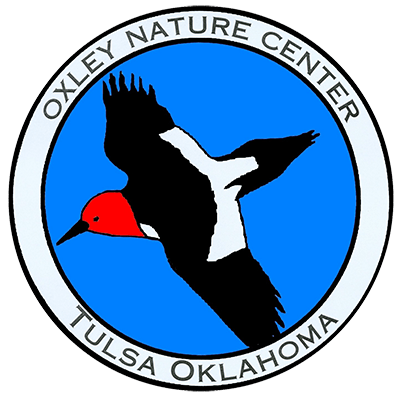History of Oxley Nature Center
Oxley
Nature Center is the crown jewel of the Tulsa Parks. The idea was born in 1972, and in 1974
Tulsa Audubon Society president Dick Sherry approached the Park Board and worked with
specialists from National Audubon to develop a master plan. To aid in
fund-raising an independent organization of Audubon members and
community leaders, now called the Friends of Oxley, was formed, and the
nature center became a reality.
Page Index
Brief History of Oxley Nature Center
The idea for a Nature Center in Tulsa began with a concept and plan presented
to the Tulsa Parks Department by Philip Nelson in 1972. The Tulsa Audubon
Society became involved, working to get the idea off the ground. Our non-profit
organization was established in early 1975 by those involved in the project and
was named Mohawk Nature Center Development, Inc., (MNCDI.) We raised the funds
for the Master Plan that was created by the National Audubon Society. Once that
plan was approved by the Park Board and City Commission, MNCDI raised the
initial funds for the shelter, trail system and other improvements.
In 1979, through a challenge grant from the Mabee Foundation and another
major gift from John and Mary Oxley, funding was provided for the construction
of the Oxley-Yetter Interpretive Building. MNCDI contracted for all the
construction work, and then turned the completed facilities over to the City of
Tulsa as each was finished. Once the physical improvements were in place, the
role of the organization changed from that of fund raising and construction to
being a membership/support organization for the Nature Center, and the name was
officially changed to the Mary K. Oxley Nature Center Association, Inc. We
provide advice and expertise as well as financial support to
continue growth and development of Oklahoma's finest Nature
Center.
It is important to know that this special place was the result of citizen
action and involvement with the City government to push for, fund and build a
worthwhile facility that the City would not have done on its own.
A More Detailed History of Oxley Nature Center
As with most things that one treasures, a certain amount of suffering,
disappointment, frustration, and hard work are necessary for the final
achievement to have any satisfaction. The evolution of the Mary K. Oxley Nature
Center did not just become a reality because everybody welcomed it with open
arms, but rather grew from the embryo of an idea to its reality through a
gauntlet of delays, growing pains, and related problems. Perseverance
characterizes the success of the story and the following short history clearly
shows the effort and time required to achieve the desired.
1972 - Phil Nelson, a citizen with the idea for a nature center, made overlay
maps and a slide presentation to the Tulsa Park Board. The idea was endorsed and
$5,600 in the 1972 Park Bond Issue was marked for security of the "Mohawk
Nature Center." Shortly after passing of the bond issue Mr. Nelson left
Tulsa and the project became dormant.
March, 1974 - Tulsa Audubon Society (TAS) President Dick Sherry appeared
before the Park Board to express the interest of the Society in the project and
requested the funds be expended. The Park Board endorsed the project but did not
know when the funds would become available.
June, 1974 - A workshop on Nature Centers was conducted by the TAS to explain
what the concept was.
July, 1974 - A member of the National Audubon Society (NAS) Nature Center Planning
Division visited Tulsa to inspect the Mohawk area.
Sept., 1974 - The TAS again asked the Park Board for the funds from the 1972
Bond Issue and the Board said that they again endorsed the idea but funds were
not available at this time. It was also pointed out that the amount originally
designated would only accomplish approximately one-half of the job due to the
high inflation since the passing of the Bond Issue.
Nov.-Dec., 1974 - The Nature Center Planning Division of National Audubon was
asked to prepare an estimate of our costs for developing a master plan for the
nature center. The master plan cost was presented to the Park Board. Again the
idea was endorsed, but the funds were not available.
Jan., 1975 - The realization that if the nature center was ever to be a
reality it was going to have to get support outside City Hall prompted the
formation of Mohawk Nature Center Development Inc. (MNCDI). This group of
interested Audubon members and community leaders arranged an agreement with the
City to allow MNCDI to fund the master plan and develop the nature center with
the City approving the project development, but not assuming any financial
obligation.
March, 1975 - Without a penny in the bank MNCDI signed a contract with the
Nature Center Planning Division of National Audubon for the master plan with
payment of $8,700 due on completion of the plan.
April, 1975 - the field work was conducted by National Audubon and the master
was scheduled for a rough draft copy to be provided in the fall.
April, 1975 - MNCDI began trying to raise funds to pay for the plan.
Aug., 1975 - Rough draft copies of the master plan were circulated to the
City, MNCDI, and Park Board members for comment and returned to National Audubon
for preparation of the final draft.
Jan., 1976 - The master plan was delivered to MNCDI.
Feb., 1976 - The plan was made public at the Park Board meeting and a Public
hearing was scheduled for March.
March, 1976 - Plan was approved by the Park Board.
April, 1976 - The plan was approved by the City Commission.
March, 1977 - Mr. and Mrs. John T. Oxley contribute $200,000 to implement the
improvements called for by the plan.
April, 1977 - The Tulsa Junior League offered to undertake a volunteer
program in conjunction with the nature center. The League also agreed to provide
partial support for the nature center naturalist's salary with the city
providing the balance.
May, 1977 - The search for a naturalist began.
Sept., 1977 - Robert G. Jennings hired as naturalist.
The
John T. Oxley Family
The high risk and pressure of the petroleum industry executive,
the love of the game of polo and the horses and men that play it, and the quiet,
peaceful, natural surroundings of a nature center which in days past was only a
park, is an unlikely trinity at best. Yet, these are three facets of John
Thurman Oxley's life, and his generosity has made the Mary K. Oxley not the
dream of a few, but a reality for every citizen of Tulsa. It is without question
appropriate that the support for this center come from an oilman, as much of
what makes Tulsa the unique city it is has been the philanthropic character of
the oilmen who made their fortunes here.
Mr. Oxley was a native Oklahoman born in Bromide, Oklahoma in
1909. He married Mary K. Yetter in 1935 and they had two sons and a daughter. He
attended East Central College, Tulsa Business College, and The University of
Tulsa Law School. His business activities were varied within the petroleum
industry and included jobs with Amerada Petroleum Corporation and Warren
Petroleum Corporation. He started Texas Natural Gasoline Corporation and had a
part interest in Oxley Petroleum Company. He was Chairman of the Board of
Arkansas Valley Industries and Director of Apco Oil Corp.
The Oxley's also owned Hereford Cattle ranches in Pawhuska,
Oklahoma and Colorado.
His interest in the game of polo was reflected by his own
abilities to play the game. He was the playing captain of eight National Winning
12-Goal teams, more than anyone else. He Captained the 1970 Boca Raton team which
defeated Prince Philip's team for England's Gold Cup. It was the first time a
United States team had ever won that title.
Thus, Mary K. Oxley Nature Center was launched by a man of
varied interests and abilities, and more importantly an obvious desire to leave
a legacy not built by man, but rather preserved by his recognition of the world
he shared with nature.
A note from Dick Sherry about John & Mary Oxley
"I do know why
Mohawk Park was so special to them. John Oxley worked a second job as a young
man in the photography studio owned by Mary's father. They started dating and
would often rent horses at Mohawk and ride the old Roosevelt Bridle Trail that
wound through the park. They later lived on a property at 36th Street North and
Memorial (which was just west of the north end of the main runway at Tulsa
International), and had several barns and corrals for their many horses. John
became quite a polo enthusiast and player, and was responsible for the polo
fields within Mohawk Park being established. My father had known John Oxley for
many years, and was the main contact person to talk with them about the proposed
nature center. In September of 1976, my father and I met with the Oxleys and
talked about a lot of different subjects including what a nature center could
mean to Tulsa. At one point, John asked "What can you do with
$300,000?" I nearly fell out of my chair! I told him we could do everything
called for in the master plan except the building. He said that he and Mary
wanted to make that contribution, and that was the springboard that really
launched the nature center."


